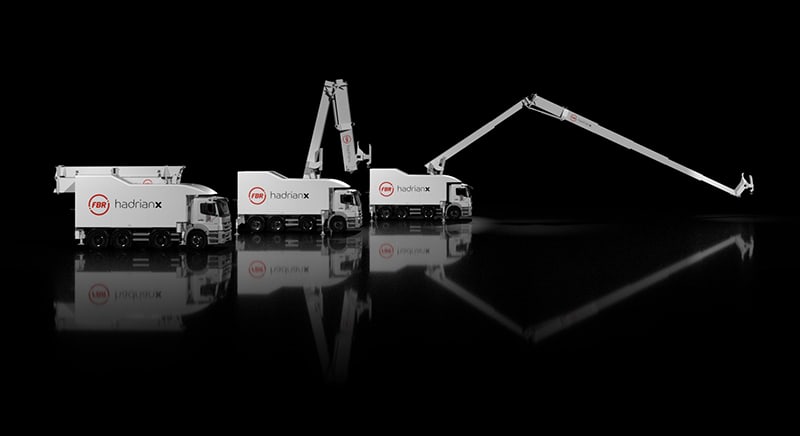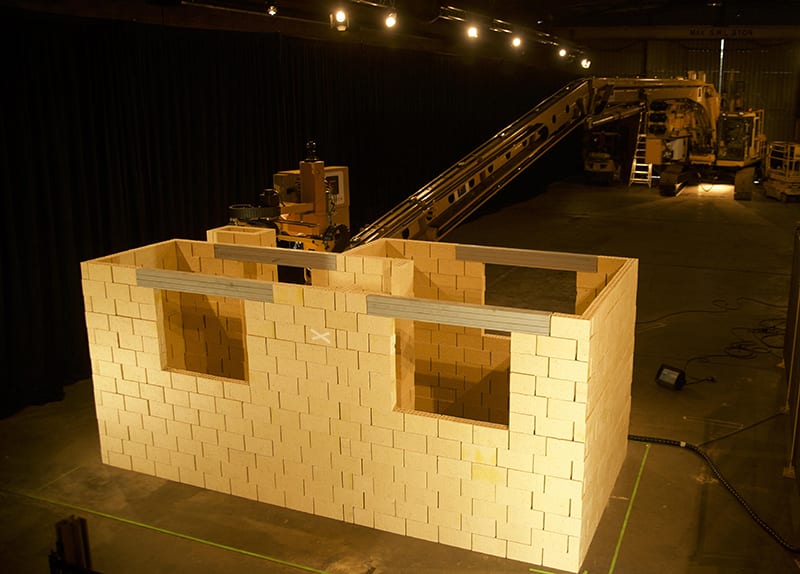A bricklaying robot named Hadrian was described in 2015 by Australian firm Fastbrick Robotics as capable of building the brick shell of a house in a matter of days, and it has now managed to complete the task.
The 180 sq m, three-bedroom, two-bathroom structure was completed in under three days by Hadrian X, a new version of the robot.
After completion, Fastbrick Robotics said the structure met verified building standards set by a civil and structural engineering consultancy group.
Mike Pivac, Fastbrick Robotics chief executive, said: “We now have the world’s only fully automated, end-to-end bricklaying solution, with a massive market waiting for it.

“We will now take everything we’ve learned to date in the Hadrian X programme and make some refinements ahead of bringing both Hadrian X robots back to our High Wycombe facility for demonstration to key commercial stakeholders.
“We now begin the next exciting phase for the Company, as we execute our global commercialisation strategy to capitalise on the significant demand for our technology.
“What we have achieved here is a quantum leap for the construction industry.”
Fastbrick Robotics’ house building follows Factory Acceptance Testing (FAT) at the firm’s test facility, where Hadrian X managed to complete:
- A two-course structure with a full combination of brick sizes, cuts and laying configurations;
- An 11-course pillar structure to demonstrate the Hadrian X’s ability to build from slab to cap height;
- A two-room structure demonstrating the Hadrian X’s ability to build a larger structure on a slab from a 3D CAD model with the required accuracy.
Images of Hadrian X: Fastbrick Robotics

Comments
Comments are closed.














Cannot wait to see this at work in real site conditions on a muddy undulating field with partially completed service trenches in poor weather or being built around a built timber frame awaiting cladding. It’s very exciting if you’re not a tradesman who might be impacted. I imagine it puts in the wall ties too?
The use will come where mass housing is needed for humanitarian grounds, defo have hurdles but rather than these people living in tents for years they could have a structure of blocks, mind you I still think we are a long way off seeing these in developed world but they will come in the future, maybe not perfect at first but think of this as the first mobile phone – look what we have got in comparison now.
This is another attempt to put men out of work ?
I agree on intricate site conditions and even in third world countries the terrain is bad
I’ve watched innovation in construction go nowhere for 40 years. Sure some cool products and pretty technology, but most of the business does it the same way our granddaddies did it. When I started out it was one of the most inefficient industries out there. A study last year says it still is. Don’t look at it as putting more people out of work. look at it as a shift in the workforce from backbreaking labour to operating and tending the brick machine. New job fields. Masonry robot operator, programmer, mechanic among so many opportunities.
The American buggy whips industry lamented the advent of the horseless carriage would put them out of business. It did. And how many United Automobile Workers owe their paycheck to the demise of the once necessary buggy whip? Don’t work harder, work smarter.